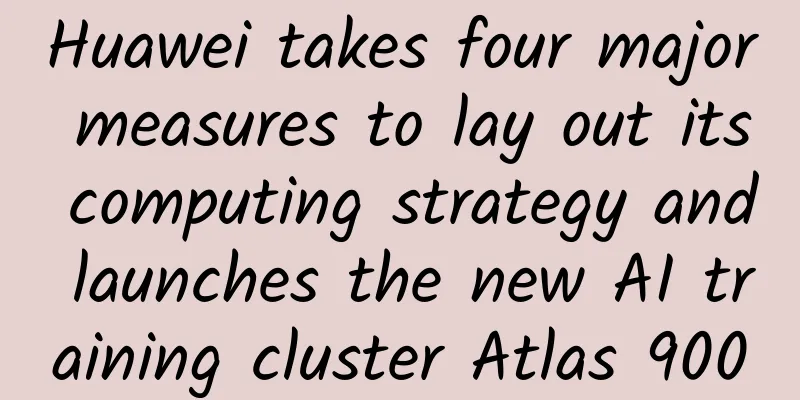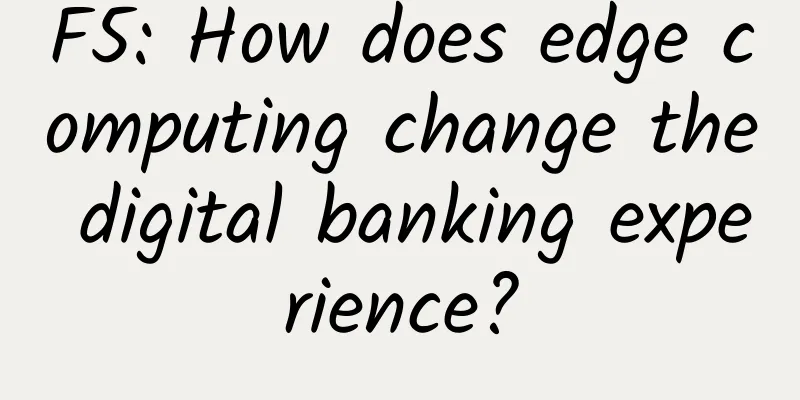Huawei takes four major measures to lay out its computing strategy and launches the new AI training cluster Atlas 900

|
On September 18, 2019, the fourth HUAWEI CONNECT 2019 officially opened in Shanghai. At the conference, Huawei released its computing strategy, which was based on architectural innovation, investment in all-scenario processor families, a business strategy of doing what it can and cannot do, and building an open ecosystem. This marked the beginning of a new era of navigation in the computing industry. At the same time, Huawei launched the Atlas 900 AI training cluster to accelerate the intelligent process of scientific research and business innovation.
Huawei Vice Chairman Hu Houkun delivered a keynote speech titled "Co-creating New Heights of Intelligence" Computing is entering a new era of intelligence Computing is a mode of human cognition of the world. From mainframes to personal computers, from smartphones to wearable devices, computing power is increasingly becoming an extension of human capabilities. At the same time, computing models are also constantly evolving, and statistical computing models will gradually become mainstream. It is estimated that in five years, the computing power consumed by AI computing will account for more than 80% of the total computing power consumption, and computing is entering a new intelligent era. In the era of intelligent computing, Huawei believes there are three important characteristics: The first feature is that it requires super computing power. Statistical computing itself is a kind of brute force computing, which is highly dependent on computing power. For example, in order for a computer to recognize a cat, it needs to be trained with millions of pictures, which consumes a lot of computing power. For more complex scenarios such as autonomous driving, astronomical exploration, and weather forecasting, the demand for computing power will be even greater. The second characteristic is that computing and intelligence will be everywhere, not just distributed at the center. From brute force computing at the center node to specialized computing at the edge, such as gene sequencing, and personalized computing at the end, such as headphones and mobile phones, they together constitute the computing form of the future intelligent era. The third feature is that efficient collaboration is required between the end, edge, and cloud. The center is responsible for computing the general model, providing collaborative support for personalized computing on the end and specialized computing on the edge. To achieve these three features, humans still face many challenges, such as super computing power, exploring new computing architectures, and processors for all scenarios. Four major measures to lay out computing strategy Huawei Vice Chairman Ken Hu said, "We are facing a $2 trillion computing industry. Huawei is committed to investing in the computing industry and laying out its strategy through breakthroughs in architectural innovation, investment in full-scenario processors, adherence to a business strategy of doing what it can and not doing what it cannot, and building an open ecosystem." First, architectural innovation: Invest in basic research, launch the Da Vinci architecture, and use innovative processor architecture to match the growth rate of computing power. Second, invest in a full-scenario processor family, including the Kunpeng series for general computing, the Ascend series for AI computing, the Kirin series for smart terminals, and the Honghu series for smart screens. Third, the business strategy of doing what is necessary and what is not. Huawei does not sell processors directly to the outside world. It provides cloud services to customers and components to partners, giving priority to supporting partners in developing complete machines. Fourth, build an open ecosystem. In the next five years, we will continue to invest $1.5 billion to gather 5 million developers and enable global partners to develop applications and solutions. Huawei releases Atlas 900, an AI training cluster This product is the result of Huawei's more than a decade of technological accumulation and is composed of thousands of Ascend processors. Under the ResNet-50 image classification model, the gold standard for measuring AI computing power, Atlas 900 completed training in just 59.8 seconds, 10 seconds faster than the previous world record with the same accuracy. The powerful computing power of Atlas 900 can be widely used in scientific research and business innovation, such as astronomical exploration, weather forecasting, autonomous driving, oil exploration and other fields. In order to enable all walks of life to obtain super computing power, Huawei deployed Atlas 900 on the cloud and launched Huawei Cloud EI cluster service, which is now open to global research institutions and universities for application at a very preferential price. At the conference, Academician Gao Wen, a member of the Chinese Academy of Engineering and director of Pengcheng Laboratory, shared the cooperation between Pengcheng Laboratory and Huawei, striving to jointly build a dynamically evolving E-class AI supercomputing system and build a new generation of AI basic research and innovation platform. Zheng Yelai, President of Huawei Cloud Business, pointed out from the perspective of commercial applications that industry AI is crossing the commercial rift and becoming a key driver for reshaping enterprise digital transformation based on Huawei Cloud's practice in more than 10 industries and more than 500 projects. "This is a new era of navigation for the computing industry. What we expect is a thousand ships competing, rather than a single boat advancing alone. We hope to work together with partners from all walks of life to seize historical opportunities and create new heights of intelligence together," Hu Houkun emphasized. |
<<: Wi-Fi 6 certification, here are 6 issues worth paying attention to!
>>: Huawei releases next-generation smart product strategy and new +AI series products
Recommend
5G will change society in the future: eight application scenarios
The epoch-making 5G technology, in addition to a ...
Five network management trends for 2022
In recent years, the development trend of network...
[Mid-Autumn Festival/National Day] CUBECLOUD: 30% off for Lite series/15% off for Pro series, available in CN2 GIA Hong Kong/CN2 GIA Los Angeles
CUBECLOUD (Magic Cube Cloud) has launched a promo...
The average monthly salary of 5G talents exceeds 14,000 yuan, and Beijing, Shanghai and Shenzhen are most in need of talent
As 5G commercialization approaches, the demand fo...
Comparison of operating data in November: Which of the three major operators has better data?
Recently, the three major operators have announce...
21Vianet and Juniper Networks Collaborate to Build an Efficient and Interconnected Data Center Network
Deploying Juniper Networks’ highly scalable MX Se...
How much do you know about these "routines" of the air conditioning system in the data center computer room?
Preface: As a chilled water system with centraliz...
Linux Network Monitoring Tools
Network communication is one of the most basic fu...
Huawei's Li Jie: Leading with innovation and continuously consolidating high-quality 5G networks
[Shanghai, China, June 5, 2023] At the 2nd Mobile...
CloudServer: $4/month KVM-2GB/50GB/5TB/three data centers
CloudServer is a new VPS hosting company, which w...
iWebFusion: Starting from $7/month - 4GB/20GB/1.5TB@1Gbps/5 data centers including Los Angeles and North Carolina
We have just shared information about iWebFusion&...
How Apple's iCloud Private Relay powers enterprise VPNs
Apple's iCloud Private Relay service offers p...
SSL/TLS protocol for secure Internet of Vehicles communications
Preface As car travel becomes increasingly intell...
What is QoS technology? What are its functions?
QoS (Quality of Service) refers to a network'...
Virtono: 25% off San Jose VPS starting at 2.2 Euros per month, free double memory
Virtono is a foreign VPS hosting company founded ...









